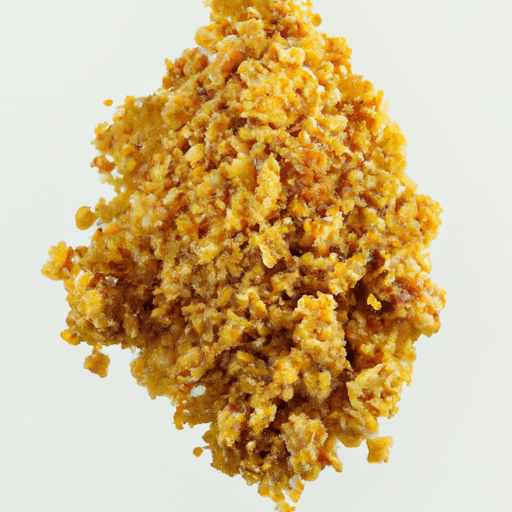Exploring the Delightful World of Tempura Batter Mix
If you’ve ever indulged in the crispy and irresistibly delicious Tempura, you must appreciate the magic that is the Tempura batter. This light and airy coating not only enhances the flavor and texture of countless dishes but also adds an element of visual appeal. In this blog post, we will delve into the delightful world of Tempura batter mix, uncovering its taste, common uses, nutritional value, and even a few interesting historical facts.
Taste Matters: A Pleasing Blend of Lightness and Crispiness
Tempura batter mix is renowned for its ability to create a delicate, crispy texture while allowing the natural flavors of the ingredients to shine. With a well-balanced blend of flour, water, and other ingredients, the batter achieves the perfect harmony of lightness and crunchiness. When cooked to perfection, Tempura batter envelopes ingredients in a thin, golden coat that is both satisfying and addictive.
Versatility in the Kitchen: From Seafood to Veggies and Beyond
One of the remarkable qualities of Tempura batter mix is its versatility in the kitchen. Traditionally associated with seafood, Tempura batter has evolved to embrace various ingredients, accommodating different dietary preferences. Whether you’re savoring succulent shrimp, tender pieces of chicken, or an assortment of vegetables, Tempura batter enhances the flavor and gives your dish a tantalizing texture.
Notably, Tempura vegetables such as sweet potatoes, bell peppers, and green beans offer a delightful contrast between the slight sweetness of the ingredients and the crispiness of the batter. This versatility makes Tempura batter a crowd-pleaser, suitable for everything from appetizers and sides to main courses.
Nutritional Value: A Treat to Savor Mindfully
While Tempura batter mix adds an extraordinary touch to your culinary creations, it’s essential to be mindful of its nutritional value. The batter is primarily composed of flour, which contributes to its lightness and crispiness. Flour is a source of carbohydrates, providing a quick burst of energy.
However, it’s important to remember that Tempura is typically deep-fried, which adds extra calories. Moderation is key, as excessive consumption of fried foods may contribute to weight gain and other health concerns. To balance the indulgence, pairing Tempura dishes with a side of fresh salad or steamed vegetables can create a well-rounded meal.
A Brief Dip into History: The Origin of Tempura
Tempura’s roots trace back to the 16th century when Portuguese traders introduced the concept of deep-frying to Japan. While frying food was not a foreign concept to the Japanese, the Portuguese brought new techniques and ingredients, including batter frying. Tempura quickly gained popularity among the working-class population, with various street vendors capitalizing on this delectable treat.
Initially limited to vegetables, Tempura gradually expanded to include seafood, with shrimp Tempura becoming an all-time favorite. Tempura eventually found its way into high-end restaurants, evolving into an elegant and refined dish that we savor today.
Fun Facts to Savor
To conclude our exploration of Tempura batter mix, here are a few intriguing facts:
- The secret to achieving the perfect Tempura batter lies in keeping the batter ice-cold, resulting in an extra crispy texture.
- In Japan, Tempura is traditionally eaten with dipping sauce, grated daikon radish, or a sprinkle of sea salt. This enhances the flavors and adds a satisfying umami element.
- Tempura is not exclusive to Japan; variations of this dish can be found in cuisines across the globe, from Korean ‘Twigim’ to Filipino ‘Crispy Pata.’
Now armed with a deeper understanding of Tempura batter mix, you can confidently embark on your culinary adventures and experiment with this delightful coating. Whether you’re preparing a simple appetizer or an elaborate feast, Tempura batter mix will add that extra touch of gourmet flair. So, grab your apron, gather your favorite ingredients, and immerse yourself in the delightful world of Tempura!
Origin and History:
- Tempura batter mix originated in Japan in the 16th century and was introduced by Portuguese missionaries.
- The word “tempura” is derived from the Latin word “tempora,” which means “times” or “periods.”
- Originally, tempura was made by coating vegetables and seafood in a mixture of flour and eggs before deep-frying.
Common Uses:
- Tempura batter mix is primarily used to make tempura, a popular Japanese dish consisting of deep-fried seafood and vegetables.
- It is commonly used to coat ingredients like shrimp, fish, squid, mushrooms, sweet potatoes, and zucchini before frying.
- Tempura batter mix can also be used to make other fried foods, such as onion rings or fritters.
Nutritional Benefits:
- Tempura batter mix is a source of energy due to its high carbohydrate content.
- It usually contains wheat flour, which provides dietary fiber, protein, and small amounts of vitamins and minerals. The specific nutritional profile may vary depending on the brand or recipe used.
- However, it is worth noting that deep-frying foods using tempura batter mix adds extra calories and fat due to the frying process.
Unique Properties or Significance:
- Tempura batter mix is known for its light and crispy texture, due to the use of cold water and minimal mixing.
- The use of tempura batter mix in Japanese cuisine reflects the influence of Portuguese missionaries in the 16th century. It has since become an integral part of Japanese culinary traditions.
- While tempura is typically associated with Japanese cuisine, variations of battered and deep-fried foods can be found in many other culinary cultures around the world.




Use the share button below if you liked it.
It makes me smile, when I see it.